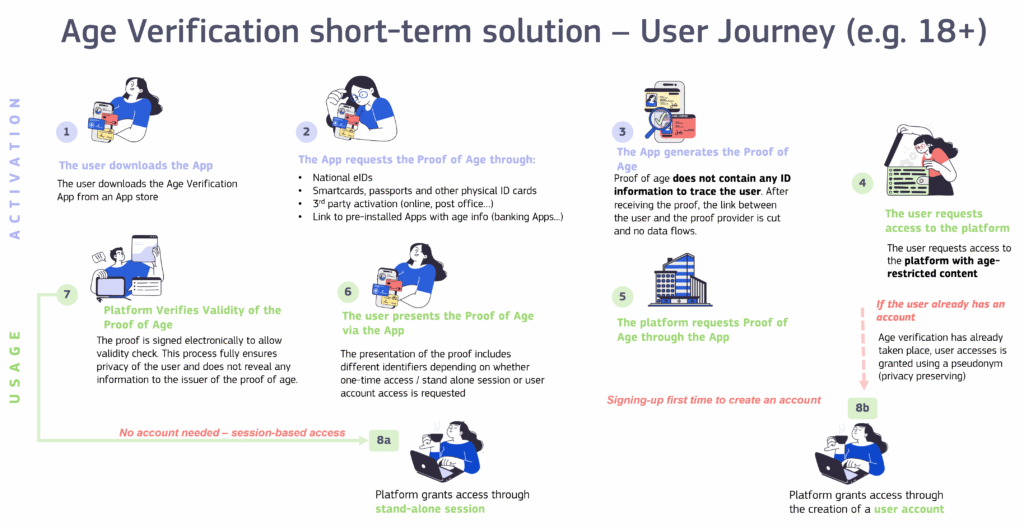The European Union is developing a new Age Verification Blueprint to protect children online. The move, supporting the Digital Services Act, is a temporary solution until the EU Digital Identity Wallet launches in 2026. The initiative comes amid concerns about minors’ exposure to harmful content and addictive digital features.
This initiative reflects the new digital landscape where currently one in three internet users in Europe is a child and one in six young people reports experiencing cyberbullying. Minors frequently encounter risky content such as drugs, pornography, and gambling. Additionally, addictive algorithms often lead young users into endless scrolling or “rabbit holes,” increasing concerns over their mental health and online safety.
“The guidelines on the protection of minors for online platforms, combined with the new age verification blueprint, are a huge step forward,” said Henna Virkkunen, Executive Vice-President for Tech Sovereignty, Security and Democracy. “Platforms have no excuse to be continuing practices that put children at risk.”
Platforms have no excuse to be continuing practices that put children at risk / Henna Virkkunen, Executive Vice-President for Tech Sovereignty, Security and Democracy
Several Member States, including Denmark, France, and Germany, push for stronger enforcement of children’s rights online. Denmark, currently hosting the EU Presidency, has pledged to make child online safety a political priority.
Privacy-respecting age check
The Age Verification App Blueprint is a prototype age verification system to check whether users are over 18 years old, without sharing or storing personal data besides the user’s age. This model will be open-source and adaptable by all EU member states and digital platforms. That would allow countries to customise the system according to their legal age limits.
According to the Commission, the app “sets a ‘gold standard’ in age assurance online,” offering users full control over their data. It is open-source and adaptable to the legal requirements of individual EU member states. The goal is to make it simple for platforms to integrate robust age checks while complying with data protection principles.
You might be interested
Platform responsibilities and design changes
The Commission’s new guidelines recommend that platforms limit exposure to harmful content and reduce manipulative design practices. Default settings for minors should restrict camera and location access and prevent messages from unknown users. Functions like “likes” or joining chat groups should require clear consent.

To combat overuse, platforms should switch off push notifications during nighttime hours and remove features such as read receipts or streaks that encourage constant engagement. Recommender systems should prioritise users’ explicit feedback over algorithmic predictions, particularly if children opt out of certain types of content.
“Minors are particularly vulnerable to practices that stimulate addictive behaviour,” the Commission noted in its guidance. “Platforms must give young users more control over what they see and how they interact.”
Five countries test
The prototype will first be tested in five countries: Denmark, France, Greece, Italy, and Spain. These governments will collaborate with the Commission on technical adjustments and national rollouts. The tool is designed to eventually integrate with the European Digital Identity Wallet, expected in 2026, but may also operate as a standalone app.
Children deserve a safe digital childhood / Caroline Stage Olsen, Denmark’s Minister for Digital Affairs
Caroline Stage Olsen, Denmark’s Minister for Digital Affairs, praised the initiative: “Children deserve a safe digital childhood. This is one of the main priorities for me during the Danish Presidency. Without proper age verification, we fail to protect children online.”
More technical information for developers is available at ageverification.dev.











